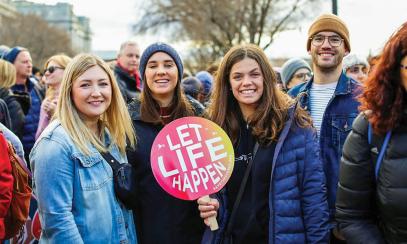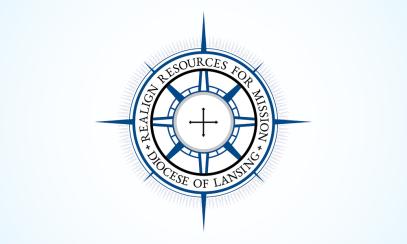Cardinals gather in conclave to elect a new pope
On March 12, the cardinals of the Church gathered to begin the conclave to elect the successor of Pope Benedict XVI. Prior to being locked in the Sistine Chapel, the cardinals celebrated Mass together in preparation for the task ahead. While only those cardinals under the age of 80 are eligible to participate in the conclave, all of them joined in the Mass.
In the days leading up to the conclave, a series of general meetings were held in which details about the conclave were decided, and the cardinals had an opportunity to learn more about each other in anticipation of one of them being named the next supreme pontiff.
State of the Church: Sede Vacante
During this period between papacies, the Apostolic Constitution, Universi Dominici Gregis, issued by Blessed John Paul II in 1996 governs operation of the Holy See. It charges the College of Cardinals, along with a few Vatican officials, with the principal duties of governing, albeit in a limited way. All the heads of the Roman Curia, the administrative arm of the Holy See and the central governing body of the entire Catholic Church, automatically resign their offices during sede vacante.
The only exceptions to the above are the Cardinal Camerlengo, who is charged with managing the property of the Holy See, and the Major Penitentiary, who continues to exercise his normal role regarding issues of mercy especially relating to the forgiveness of sins. Overseas diplomacy and pastoral work will also continue during sede vacante through the efforts of papal legates and both the Vicar General of Rome and the Vicar General for the Vatican City respectively.
Other notable changes that will occur during this period include the use of special postage stamps by the Vatican City and the use of a different coat of arms for the Holy See. In terms of the coat of arms, the papal tiara over the keys will be replaced with the umbraculum, or ombrellino (“little umbrella”). This symbolizes the lack of a pope and also the governance of the Camerlengo over the temporalities of the Holy See. The Camerlengo also adds this symbol to his own coat of arms, which he will remove once a pope is elected.
What is a conclave: From a Latin word meaning “with key,” it normally takes place 15-20 days after the pope’s death. The College of Cardinals sets the exact date. By law, the conclave begins in the Sistine Chapel. The cardinals will celebrate the Votive Mass and begin the election process
Who participates: Cardinals who are younger than 80 have the right to vote for the next pope. They are attended by cooks, housekeepers and medical personnel. Everyone involved must swear an oath of secrecy.
What happens: The cardinals are locked in, to prevent any outside influence on their voting. Election takes place by secret ballot. Blank ballots are prepared and distributed. The electors write the name of the candidate on the lower half and fold it in two.
- Each of the active cardinals – under 80 years of age – walks to an altar in order of seniority and pledges to perform his duty with integrity.
- Each cardinal then places a folded ballot containing his choice onto a small disc made of precious metal and drops it inside a chalice.
- The ballots are read by three scrutineers or tellers, who are selected by lot. As the names on the ballots are called out, one of the scrutineers threads the ballots together. If a cardinal receives two-thirds of the votes, he is the new pontiff.
- If there is no winner, another vote is taken.
What is the smoke: The threaded ballots are burned with chemicals to turn the smoke white if there is an election and black if there is not.
What if they can’t decide: If there is no election after 13 days, the cardinals may suspend voting for a day in order to pray and discuss. This can occur multiple times.
Who can be elected: Although the next pope will almost certainly be a member of the College of Cardinals, any man who is baptized and ordained as a priest and bishop could be elected. He does not need to be present for election to occur.
Who are the eligible U.S. electors?
The following U.S. cardinals are under the age of 80 and eligible to vote for the next pope:
Cardinal Justin Rigali, Archdiocese of Philadelphia, emeritus
Cardinal Roger Mahony, Archdiocese of Los Angeles, emeritus
Cardinal William Levada, Roman Curia, emeritus
Cardinal Francis George, Archdiocese of Chicago
Cardinal Edwin O’Brien, Roman Curia
Cardinal Donald Wuerl, Archdiocese of Washington, D.C.
Cardinal Sean O’Malley, Archdiocese of Boston
Cardinal Raymond Burke, Roman Curia
Cardinal Daniel DiNardo, Archdiocese of Galveston-Houston
Cardinal James Harvey, Roman Curia
Cardinal Timothy Dolan, Archdiocese of New York
The election process at a glance
- By law, the conclave begins in the Sistine Chapel. The cardinals will celebrate the Votive Mass and begin the election process.
- The cardinals draw lots to select three members to collect ballots from the infirm, three "tellers" to count the votes and three others to review the results.
- Blank ballots are prepared and distributed. The electors write the name of the candidate on the lower half and fold it in two.
- Each of the active cardinals -- under 80 years of age -- walks to an altar in order of seniority and pledges to perform his duty with integrity.
- Each cardinal then places a folded ballot containing his choice onto a small disc made of precious metal and drops it inside a chalice.
- If a cardinal receives two-thirds plus one of the votes, he is the new pontiff.
- If there is no winner, another vote is taken.
- After the votes are counted each time, the ballots are burned. Black smoke indicates there has been no winner. White smoke indicates there is a new pope.
For a more detailed treatment of the process, see Universi Dominici Gregis, Apostolic Constitution of Pope John Paul II on the Vacancy of the Apostolic See and the Election of the Roman Pontiff (Feb. 22, 1996).



